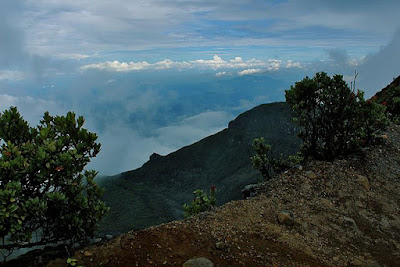WAKATOBI NATIONAL MARINE PARK
 |
| Image by q phia - bruce over corals, malabea east, wakatobi, 2018, CC BY 2.0 |
Wakatobi National Marine Park is one of the most beautiful underwater paradises in the world. It is located in Wakatobi Regency, Southeast Sulawesi Province. It is also a tourist destination and undersea explorers do a lot of exploration there.
Wangi-Wangi is the principal town of Wakatobi Regency and it’s the gateway to the underwater nirvana. Wangi-Wangi, Kalidupa, Tomia and Binongko are the main islands of this regency.
Wakatobi is the abbreviation of the collective names of the four main islands. The archipelago was called the Islands of Blacksmith before December 18, 2003 and was still a part of Buton Regency. Nowadays, people can still meet the blacksmiths living in that region.
Astronomically, Wakatobi Regency is situated south of the equator. It has dry and wet seasons and the temperature is about 18 - 35 degrees Celsius. It is so warm and it’s like spring all the year round.
Wakatobi National Marine Park was officially launched in 1996 and it covers the area of 1.39 million hectares. Its marine biodiversity and coral reefs is one of the highest priorities of the Indonesian Marine conservation.
The riches and the beauty of Wakatobi National Marine Park has been known in foreign countries. Operation Wallacia that runs a series of biological and social science expeditions has discovered that the area of southeast Sulawesi owns various types of coral reefs.
The Bajo people are very capable in diving. Bajo divers wear scuba mask and wetsuit to dive in the sea. They use spears to catch fish and are also skillful at walking on the ocean bed.
There are 40 dive sites in Wakatobi, the best ones are House Reef, Cornucopia, Coral Garden and Roma. However, Roma is the most favorite one and it’s in the waters of Tomia Island. There’re red-tooth tigerfish and a lot of unknown fishes you can find at Roma dive site.
The yearly temperature is around 26 – 30 degrees Celsius and it’s quite good for scuba diving. Usually, it’s very crowded in April – May and September – November. It is advisable to book a hotel room before going there if you intend to have a vacation within these months.
While staying in Jakarta, you’ve the chance to eat Soto Betawi (Jakarta traditional soup) or buy chicken noodles from a street food vendor. However, Wakatobi has Kasuami traditional food.
Kasuami is a type of steamed food and looks like the cone shaped rice. The inhabitants eat it instead of rice. It is very tasty to eat with hot red snapper soup or traditional Parende fish soup.
Kasuami doesn’t spoil easily and it’s the required food for fishermen while they are at sea. Besides, there’re baked rice (Luluta) and vegetable soup (Heloa Sirsa), roasted chicken and coconut.
Water transport is the oldest and cheapest transport in Wakatobi. Ship and boat are widely used by Bajo tribe because they are so familiar with sea and river.
The Bajo tribe’s stilt houses are unique as the piles are driven into the coral reefs. You can see one or two different sizes of boats docked in front of a stilt house. It’s so interesting to see kids rowing traditional sampans.
Besides fishing boats, cast nets can be seen in front of the stilt houses. It’s very convenient to visit the Bajo tribe’s kampong on Wangi-Wangi Island.
Kayangan hill, which is located on Tomia Island, is the ideal place to have a bird’s eye view of the island chain. Not only will you be fascinated with the underwater panorama but also another side of the world.
There is a beautiful camping location and a lot of tourists come to set up their tents. At sunset, they sit together with their family members and take photos of the setting sun. They can also look at the twinkling stars and the shinny moon in the evening.



Comments
Post a Comment